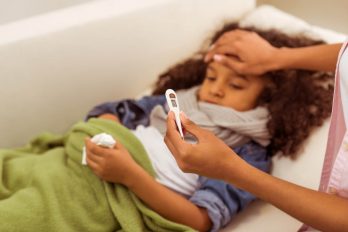Becoming a parent for the first time is a thrilling and joyful experience, but it also comes with a great deal of responsibility, particularly regarding your child’s health. As a new parent, you must be aware of the prevalent illnesses that can affect infants in their first year of life. By becoming familiar with these diseases, you will be better prepared to recognize their symptoms, seek appropriate medical care, and take preventative measures. In this blog post, we will discuss ten diseases that first-year parents should be prepared to manage and offer advice on how to do so.
Respiratory Syncytial Virus (RSV)
RSV is a prevalent respiratory infection in infants and young children. It causes cold-like symptoms, including coughing, wheezing, and congestion. In severe instances, it may result in bronchitis or pneumonia. To prevent RSV, practice proper hygiene, avoid exposing your infant to ill individuals, and maintain a clean environment for your child.
Gastroenteritis
Gastroenteritis, also known as the stomach flu, is characterized by diarrhea, vomiting, and abdominal discomfort. It is frequently caused by bacterial or viral infections. Frequent handwashing, appropriate food handling, and maintaining a clean environment can aid in preventing the spread of this disease.
Hand, Foot, and Mouth Disease (HFMD)
HFMD is a viral illness that affects young children predominantly. Symptoms include fever, sore pharynx, and a rash on the hands, feet, and mouth. Good hygiene practices, such as frequent handwashing and avoiding intimate contact with infected people, can reduce the likelihood of transmission.
Infections of the Ear
Ear infections are common in infants and adolescents. They frequently occur after a respiratory infection and can cause ear irritation, fever, and agitation. Ear infections can be prevented by breastfeeding, avoiding exposure to secondhand smoke, and practicing excellent hygiene.
Common Cold
The common cold is caused by a viral infection and is characterized by runny nose, wheezing, and mild fever. By practicing good hand hygiene, avoiding crowded places, and maintaining a clean environment for your infant, you can reduce the likelihood that he or she will acquire a cold.
Influenza (Flu)
Influenza is an extremely contagious respiratory infection that can cause severe complications in infants. Annual flu vaccinations, excellent hygiene, and avoiding close contact with sick people are essential for preventing influenza.
Croup
Croup is a viral infection of the upper airway that causes a barking cough and respiratory difficulties. Croup can be prevented by keeping your baby’s environment clean, using a humidifier, and avoiding exposure to tobacco smoke.
Conjunctivitis (Pink Eye)
Conjunctivitis (Pink Eye) is an inflammation of the thin membrane that covers the eye, the conjunctiva. It causes eye redness, irritation, and discharge. Good hygiene, avoiding the sharing of personal items, and prompt medical attention can aid in the management and prevention of conjunctivitis.
Thrush
Thrush is a prevalent fungal infection that affects infants. It appears on the tongue and inside the mouth as white regions. Maintaining excellent oral hygiene for your infant, sterilizing pacifiers and bottles, and, if necessary, seeking medical treatment can help prevent and treat thrush.
Respiratory Tract Infections (Bronchiolitis, Pneumonia)
Respiratory tract infections such as bronchiolitis and pneumonia can cause difficulty breathing, fever, and wheezing in infants. Practicing proper hygiene, avoiding exposure to cigarette smoke, and maintaining a clean and secure living environment can help reduce the likelihood of contracting these infections.
As a first-year parent, it is crucial that you are familiar with the common maladies that can affect your infant. By becoming familiar with these ten diseases and implementing preventive measures, you can protect your child’s health and ensure a joyful and healthy first year of life. Remember, if your infant displays any concerning symptoms, it is always advisable to consult a medical professional for a proper diagnosis and treatment.




